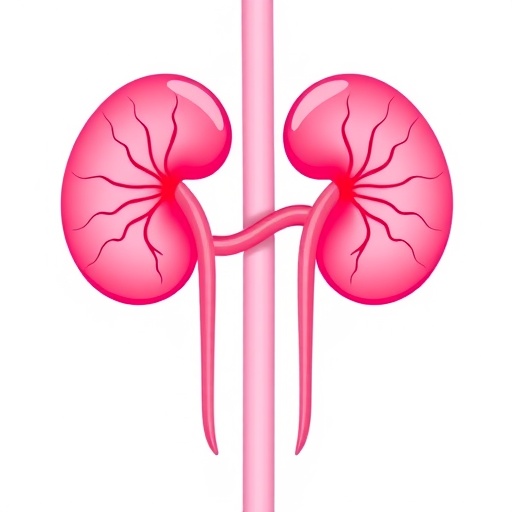Using advanced human kidney organoids derived from induced pluripotent stem cells (iPSCs), researchers at the Institute of Science Tokyo have unraveled a pivotal molecular mechanism underlying nephronophthisis (NPH), an inherited kidney disorder marked by progressive fibrosis. Their groundbreaking study illuminates the role of aberrant Hippo signaling in driving the fibrotic remodeling characteristic of NPH, particularly in cases linked to deficiency of the NPHP1 gene. By employing genome-edited iPSC-derived kidney organoids modeling NPHP1 loss, the team not only decoded pathological fibrosis pathways but also identified a promising therapeutic avenue that could transform the clinical management of this currently untreatable disease.
Nephronophthisis, primarily affecting children and young adults, represents a leading cause of end-stage kidney disease in this population, accounting for approximately 10% of pediatric patients requiring dialysis. The disorder manifests with gradual scarring and cyst development within the renal tubules, culminating in organ failure. Despite its clinical severity and genetic elucidation — most notably mutations in the NPHP1 gene coding for nephrocystin-1, a protein essential for tubular integrity — the lack of faithful animal models has historically impeded mechanistic insights and therapeutic development.
The challenge of replicating human nephronophthisis pathology in rodents, which fail to exhibit the hallmark fibrotic progression observed in patients, prompted the scientific team, led by Associate Professor Eisei Sohara, to innovate a human-relevant disease platform. Harnessing the pluripotent versatility of iPSCs, they engineered NPHP1-deficient cell lines via targeted genome editing, enabling differentiation into complex three-dimensional kidney organoids that recapitulate nephron architecture and cellular heterogeneity with remarkable fidelity.
Exposure of these NPHP1-deficient organoids to pro-inflammatory stimuli, specifically low-dose interleukin-1β, triggered pronounced fibrotic transformations that mirrored clinical observations. Detailed transcriptomic and proteomic analyses revealed significant upregulation of extracellular matrix components such as fibronectin, collagen isoforms, and connective tissue growth factor (CTGF), hallmarks of activated fibrogenesis signaling. These findings provided compelling evidence that loss of nephrocystin-1 disrupts molecular pathways critical for tubular repair and homeostasis.
Delving deeper, the researchers identified a dysregulated Hippo signaling axis as the driver behind this pathological fibrosis. The Hippo pathway plays an evolutionarily conserved role in controlling organ size, cell proliferation, and apoptosis by modulating the localization and activity of transcriptional coactivators YAP and TAZ. In healthy tissue, Hippo signaling exerts a checks-and-balances control to prevent excessive scar formation during injury repair. However, in NPHP1-deficient organoids, an aberrant activation of this pathway unleashed unchecked YAP/TAZ nuclear signaling, perpetuating fibrotic gene expression and renal tissue remodeling.
Eisei Sohara elaborated, “Our data demonstrate that nephrocystin-1 physically and functionally interacts with Hippo pathway components to maintain a fine-tuned equilibrium between regeneration and fibrosis in the kidney. Its absence tips the balance towards persistent fibrogenesis, which underlies the progressive renal decline witnessed in NPH patients.” This mechanistic insight not only advances fundamental understanding of disease pathogenesis but also exposes a previously uncharted therapeutic vulnerability.
Capitalizing on this discovery, the team embarked on a targeted drug screening endeavor using their organoid model to identify Hippo pathway inhibitors capable of mitigating fibrosis. Remarkably, verteporfin, a clinically approved photosensitizer conventionally used in ophthalmology to treat macular degeneration, emerged as a potent antifibrotic agent. Verteporfin demonstrated efficacy in reducing the expression of fibrosis-associated genes and normalizing extracellular matrix deposition within the diseased kidney organoids.
Lecturer Koichiro Susa emphasized the translational significance: “The repurposing of verteporfin holds immense promise given its existing safety profile and regulatory approval. This presents a rare opportunity to expedite therapeutic application for nephronophthisis without the protracted timelines typically associated with novel drug development.” These results herald a paradigm shift in addressing chronic kidney fibrosis through modulation of Hippo signaling dynamics.
This study represents the first successful application of human iPSC-derived models for drug testing in NPH, showcasing the incredible potential of organoid-based platforms to recapitulate complex human disease phenotypes unamenable to animal modeling. By bridging the gap between in vitro mechanistic insights and clinical intervention strategies, such systems propel precision medicine approaches tailored to genetic kidney disorders.
Looking forward, the researchers plan to refine their kidney organoid platform further to dissect additional fibrogenic pathways and screen an expanded repertoire of candidate therapeutics. This endeavor aims to broaden the armamentarium against chronic kidney diseases, ultimately enhancing patient outcomes through safer and more effective treatments that address underlying molecular drivers rather than merely managing symptoms.
The Institute of Science Tokyo, established in 2024 via the integration of Tokyo Medical and Dental University and Tokyo Institute of Technology, serves as a multidisciplinary hub advancing biomedical sciences through innovative stem cell technologies. This latest contribution exemplifies its mission of generating societal value by transforming cutting-edge research into tangible health benefits.
In conclusion, the convergence of genome editing, organoid biology, and signaling pathway modulation offers transformative insights and therapeutic possibilities for nephronophthisis, a devastating pediatric renal disorder. The elucidation of Hippo pathway involvement provides a crucial molecular foothold, while verteporfin’s repurposing underscores the pragmatic potential to translate these findings into clinical reality in the near term. This work not only sheds light on the enigmatic mechanisms of kidney fibrosis but also charts a hopeful course toward disease-modifying interventions.
Subject of Research: Cells
Article Title: iPSC-based drug discovery identified the Hippo signaling pathway as a therapeutic target in the fibrosis of NPHP1-deficient nephronophthisis
News Publication Date: 19-Sep-2025
Web References: http://dx.doi.org/10.1186/s13287-025-04567-0
References: doi:10.1186/s13287-025-04567-0
Image Credits: Institute of Science Tokyo
Keywords: nephronophthisis, kidney fibrosis, Hippo signaling pathway, NPHP1 gene, iPSC-derived organoids, verteporfin, genome editing, kidney disease modeling, chronic kidney disease, fibrogenesis, personalized medicine, stem cell research




